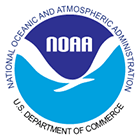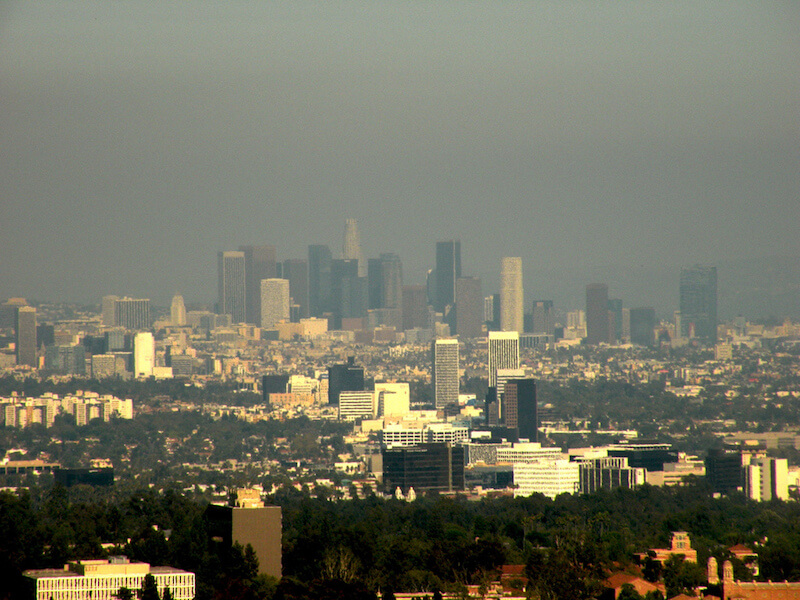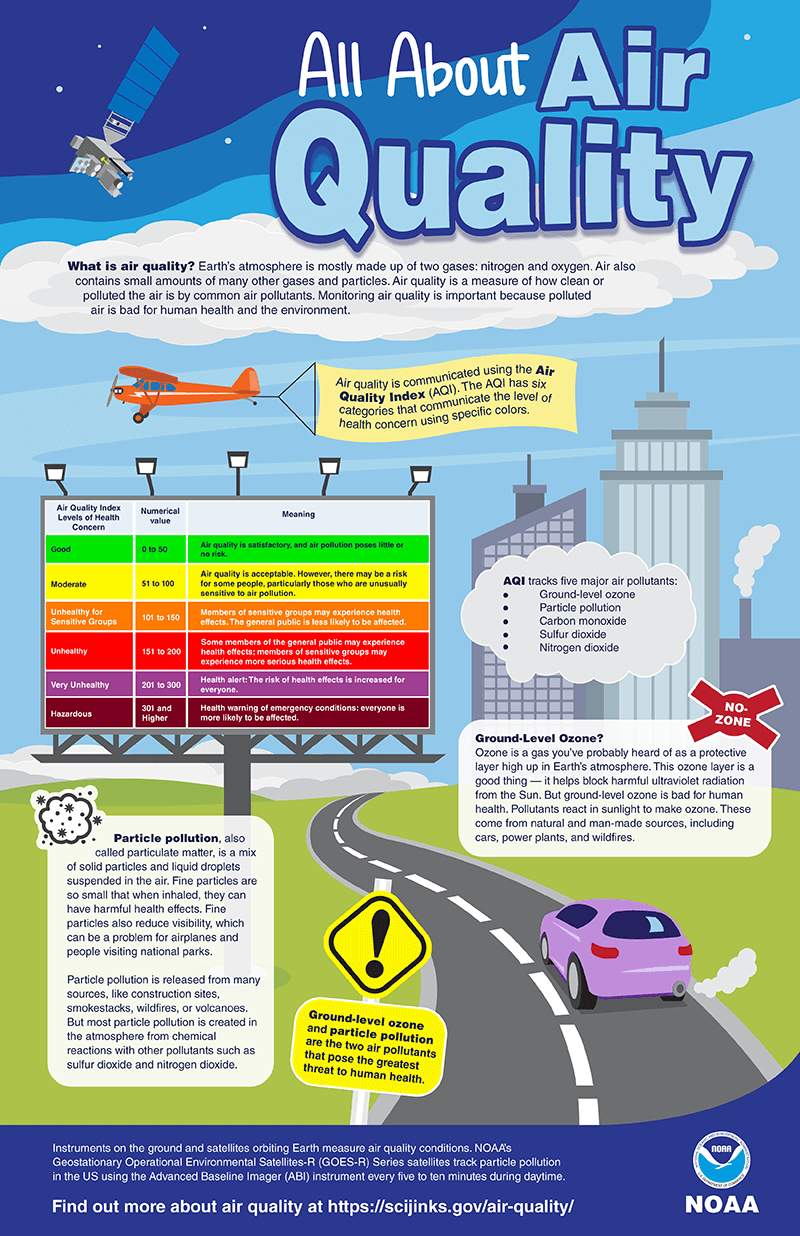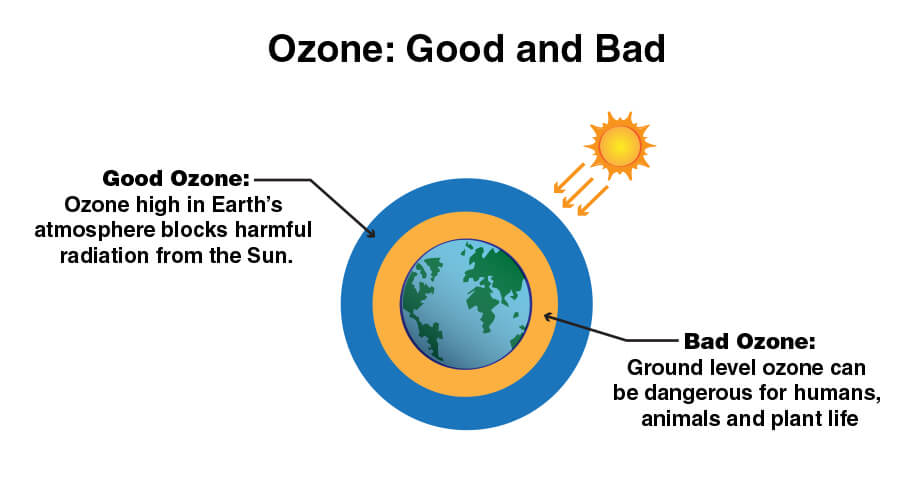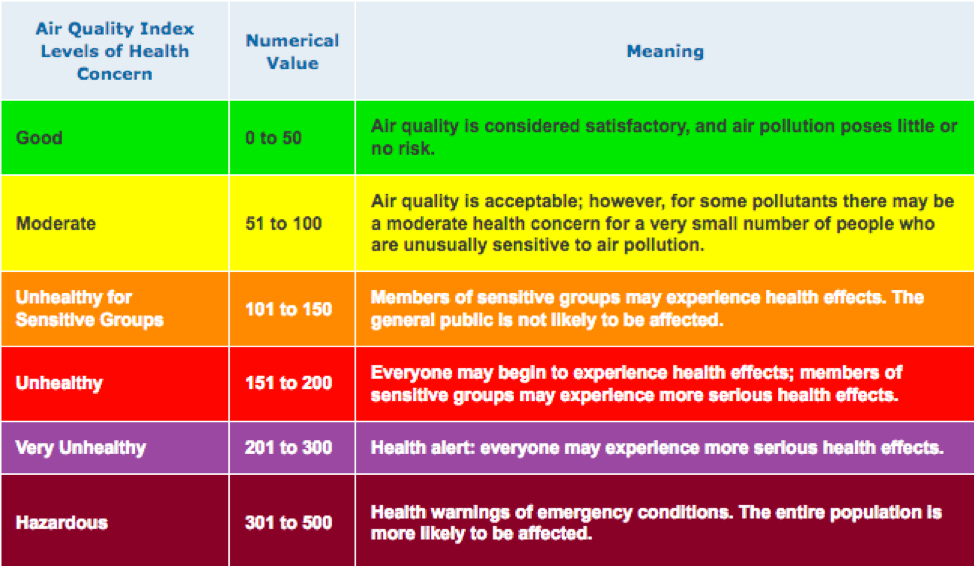Where does information about air quality come from?
Instruments on the ground and satellites orbiting Earth collect information about what is in our air. For example, satellites in NOAA’s GOES-R (short for Geostationary Operational Environmental Satellites-R) Series monitor the particle pollution in our atmosphere.
The Joint Polar Satellite System (JPSS) also collects information about particles in our air. These particles include smoke particles from wildfires; airborne dust during dust and sand storms; urban and industrial pollution; and ash from erupting volcanoes. Ground level ozone can also be measured by the JPSS series of satellites.
GOES-R Series satellites can provide particle pollution measurements approximately every five minutes during the day. JPSS satellites can provide a higher resolution measurement of aerosols over the entire planet once a day. JPSS can also observe the movement of aerosols from one side of the planet to the other. JPSS can also measure carbon monoxide which is associated with poor air quality resulting from wildfires.
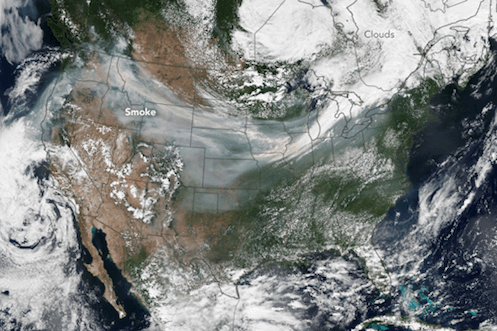
The image mosaic on the left of the slider bar shows visible smoke from wildfires on the West Coast of the blowing eastward across the United States. The image to the right of the slider bar shows the concentrations of airborne particles, or aerosols, from the fires that were swept west to east. Data from Suomi-NPP satellite, which is part of the JPSS system. Credit: NASA Earth Observatory/SSAI/SuomiNPP
